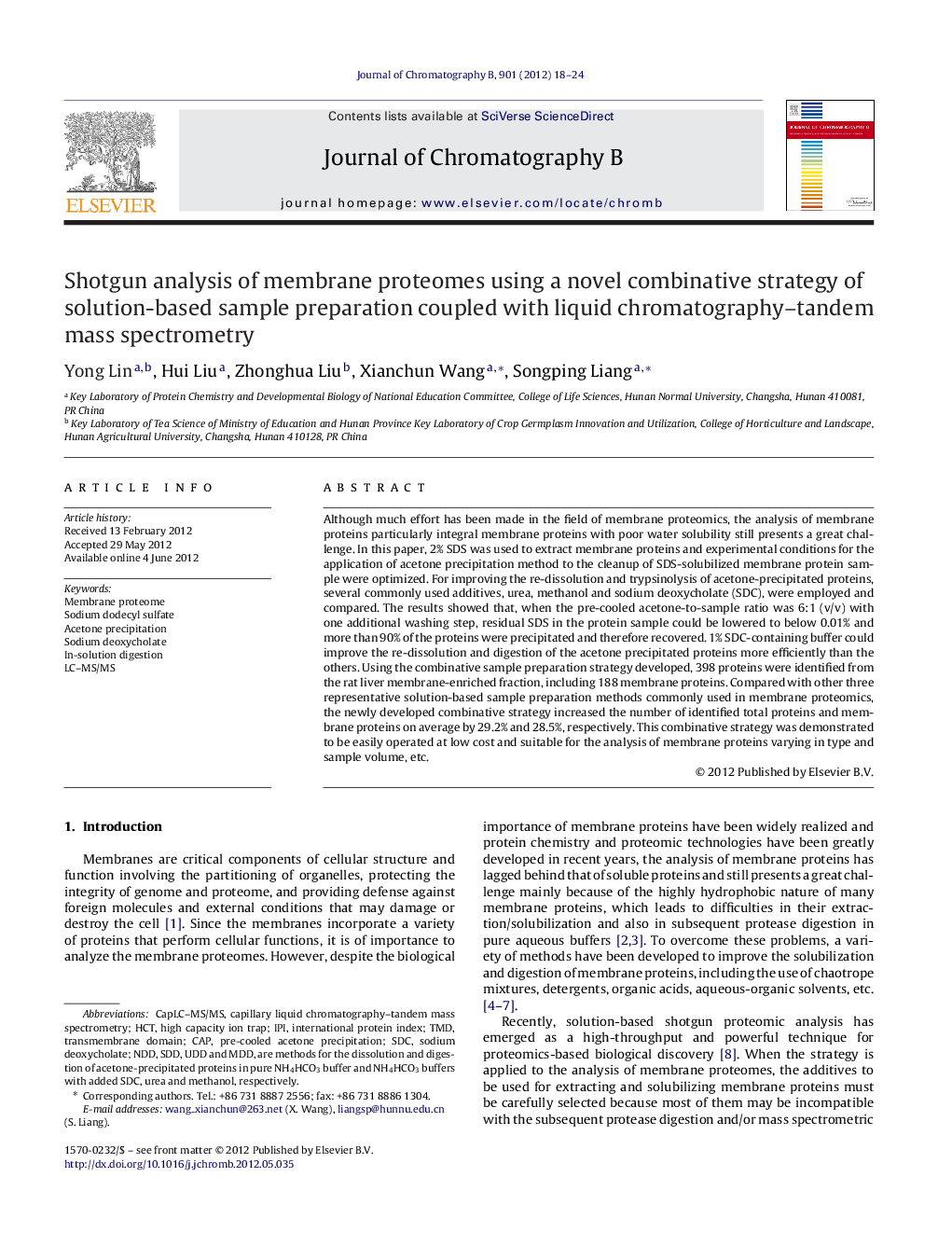| Article ID | Journal | Published Year | Pages | File Type |
|---|---|---|---|---|
| 1213937 | Journal of Chromatography B | 2012 | 7 Pages |
Although much effort has been made in the field of membrane proteomics, the analysis of membrane proteins particularly integral membrane proteins with poor water solubility still presents a great challenge. In this paper, 2% SDS was used to extract membrane proteins and experimental conditions for the application of acetone precipitation method to the cleanup of SDS-solubilized membrane protein sample were optimized. For improving the re-dissolution and trypsinolysis of acetone-precipitated proteins, several commonly used additives, urea, methanol and sodium deoxycholate (SDC), were employed and compared. The results showed that, when the pre-cooled acetone-to-sample ratio was 6:1 (v/v) with one additional washing step, residual SDS in the protein sample could be lowered to below 0.01% and more than 90% of the proteins were precipitated and therefore recovered. 1% SDC-containing buffer could improve the re-dissolution and digestion of the acetone precipitated proteins more efficiently than the others. Using the combinative sample preparation strategy developed, 398 proteins were identified from the rat liver membrane-enriched fraction, including 188 membrane proteins. Compared with other three representative solution-based sample preparation methods commonly used in membrane proteomics, the newly developed combinative strategy increased the number of identified total proteins and membrane proteins on average by 29.2% and 28.5%, respectively. This combinative strategy was demonstrated to be easily operated at low cost and suitable for the analysis of membrane proteins varying in type and sample volume, etc.
► Developed an entirely solution-based combinative method for membrane proteome analysis. ► Optimized acetone precipitation for sample cleanup and membrane protein recovery. ► Resolved the problems in re-dissolution of acetone-precipitated proteins. ► The developed method can also be used in the analysis of other types of proteins. ► The combinative method is easy to operate at low cost.
